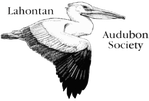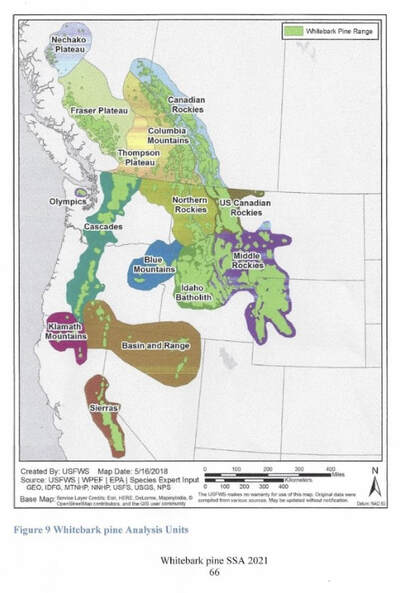|
By Rose Strickland Last December, the U.S. Fish & Wildlife Service (USFWS) listed the whitebark pine (pinus albicaulis) as a threatened species under the Endangered Species Act. Over 50% of all whitebark pines have died in the last two decades over its 80 million acre range in the western U.S. and southwestern Canada. While the majority of whitebark pine forests are north of Reno, there are many stands of these pines in both the Sierra south of Reno and in the Basin and Range unit identified by the USFWS. According to David Charlet in “Nevada Conifers,” whitebark pines are known from 17 mountain ranges in 7 counties in Nevada. Near Reno and Lake Tahoe, there are 11 recorded sites in the Carson Range, especially high on Mt. Rose and 4 sites near the summit of Peavine Mountain. The mountains of Elko County host 21 recorded sites, including the Buck Creek, Bull Run, Independence, Ruby and Jarbidge Mountains, the East Humboldt, Fox Creek, Ichabod and Mary's River Ranges, and Elk Mountain. The U.S. Forest Service (USFS) has described the importance of this tree species. Whitebark pines function as both a keystone and foundation species as a result of the following traits: large, nutritious seeds, seed dispersal by Clark's nutcrackers, hardy, robust seedlings, and tolerance for cold, windy sites. These pines help to regulate snow melt and prevent erosion while providing wildlife habitat to many species. Its pine seeds feed birds, small mammals and bears and have long been a food source to indigenous communities. Seeds cached by Clark's nutcrackers often germinate and produce seedlings, helping the forests recover from fires. A disease called white pine blister rust and attacks by mountain pine beetles are killing these pines in windy, cold, high elevations. Climate warming has made the pines more susceptible to diseases and bug attacks. And wildfires have also taken their toll on this keystone species. Some whitebark pines are resistant to the blister rust. Conservation efforts over the last two decades have focused on collecting seeds from disease resistant pines, growing them in nurseries and transplanting seedlings in pine restoration and fire rehabilitation areas. Other conservation efforts involve using pheromones from beetles which apparently signal invading beetles to go elsewhere. High Country News chronicles efforts to save the whitebark pine (1). Clark's nutcrackers have a mutualistic bond with whitebark pines and may be the key to the pines' survival. Whitebark pine cones do not open by themselves or with fire. They are dependent on the nutcracker to open and disperse the rich pine seeds through thousands of caches into surrounding areas. Researchers are assessing this mutual relationship, hoping to discover if declines in whitebark seed production could cause declines in nutcracker populations, thus reducing the pine's chances of surviving from fires, diseases, and bug attacks (2). The USFS has published A range-wide restoration strategy for whitebark pine in June, 2012 (3). On pp. 8-11, a thorough account describes the co-evolved, mutualistic interactions of the whitebark pine and the Clark's nutcracker. A national restoration plan was developed by the Whitebark Pine Ecosystem Foundation and American Forests and published in Forest Ecology and Management in 2022 (4). The USFWS will be developing a recovery plan for whitebark pines. The federal listing may also mean more funding to boost new and ongoing research into addressing the many threats to the survival of whitebark pines and to implement its recovery plans. The Conservation Committee of the Lahontan Audubon Society is working with the Humboldt-Toiyabe National Forest biologists and botanists to assist in their whitebark pine restoration projects. Please contact Committee Chair Rose Strickland at [email protected] if you would like to volunteer. Sources: 1. https://www.hcn.org/articles/north-endangered-species-how-to-save-the-whitebark-pine 2. https://journals.plos.org/plosone/article?id=10.1371/journal.pone.0227161 3. https://www.fs.usda-gov/rmrs/publications/range-wide-restoration-strategy-whitebark-pine-pinus-albicaulis/ 4. https://www.sciencedirect.com/science/article/pii/S0378112722002766 |
topics
All
Archives
July 2024
|



 RSS Feed
RSS Feed